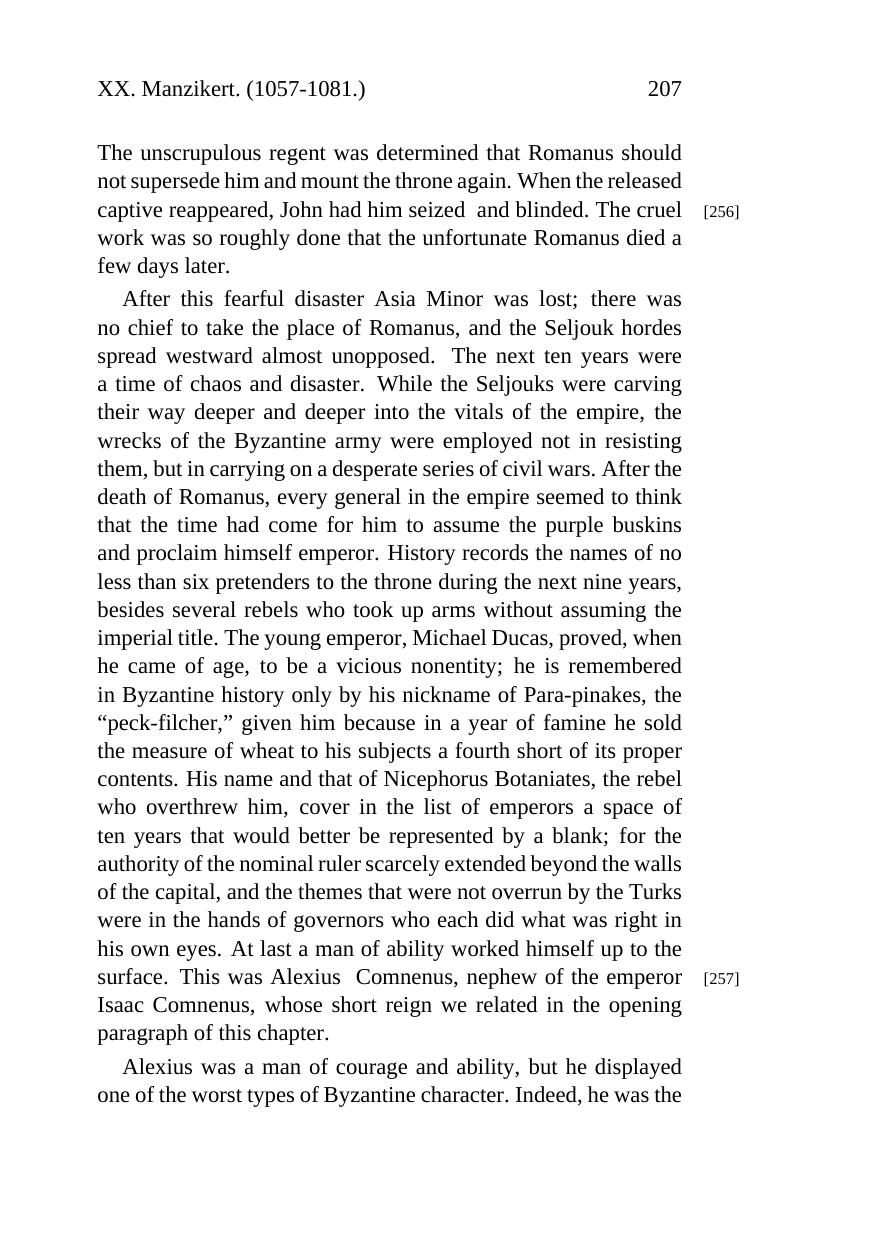The Byzantine Empire by Charles William Chadwick Oman

Author:Charles William Chadwick Oman [Oman, Charles William Chadwick]
Language: eng
Format: epub, pdf
Published: 2011-10-13T16:00:00+00:00
Representation Of The Madonna Enthroned. (From a Byzantine Ivory.) (From "L'Art Byzantin." Par Charles Bayet. Paris, Quantin, 1883.)
Leo died in 740, leaving the throne to his son, [pg 196] Constantine V., whom he had brought up to follow in his own footsteps. The new emperor was a good soldier and a capable man of business, but his main interest in life centred in the struggle against image-worship. Where Leo had chastised the adherents of superstition with whips Constantine chastised them with scorpions. He was a true persecutor, and executed not only rioters and traitors, as his father had done, but all prominent opponents of his policy who provoked his wrath. Hence he incurred an amount of hatred even greater than that which encompassed Leo III., and his very name has been handed down to history with the insulting byword Copronymus tacked on to it.
Though strong and clever, Constantine was far below his father in ability, and his reign was marked by one or two disasters, though its general tenor was successful enough. Two defeats in Bulgaria were comparatively unimportant, but a noteworthy though not a dangerous loss was suffered when Ravenna and all the other East-Roman possessions in Central Italy were captured by the Lombards in a.d. 750. At this time Pope Stephen, when attacked by the same enemy, sent for aid to Pipin the Frank, instead of calling on the Emperor, and for the future the papacy was for all practical purposes dependent on the Franks and not on the empire. The loss of the distant exarchate of Ravenna seemed a small thing, however, when placed by the side of Constantine's successes against the Saracens, Slavs, and Bulgarians, all of whom he beat back with great slaughter on the numerous occasions when they invaded the empire.
[pg 197] But in the minds both of Constantine himself and of his contemporaries, his dealings with things religious were the main feature of his reign. He collected a council of 338 bishops at Constantinople in 761, at which image-worship was declared contrary to all Christian doctrine, and after obtaining this condemnation, attacked it everywhere as a heresy and not merely a superstition. In the following year, finding the monks the strongest supporters of the images, he commenced a crusade against monasticism. He first forbade the reception of any novices, and shortly afterwards begun to close monasteries wholesale. We are told that he compelled many of their inmates to marry by force of threats; others were exiled to Cyprus by the hundred; not a few were flogged and imprisoned, and a certain number of prominent men were put to death. These unwise measures had the natural effect: the monks were everywhere regarded as martyrs, and the image-worship which they supported grew more than ever popular with the masses.
While still in the full vigour of his persecuting enthusiasm, Constantine Copronymus died in 775, leaving the throne to his son, Leo IV., an Iconoclast, like all his race, but one who imitated the milder measures of his grandfather rather than the more violent methods of his father.
Download
The Byzantine Empire by Charles William Chadwick Oman.pdf
This site does not store any files on its server. We only index and link to content provided by other sites. Please contact the content providers to delete copyright contents if any and email us, we'll remove relevant links or contents immediately.
The Daily Stoic by Holiday Ryan & Hanselman Stephen(3266)
The Fate of Rome: Climate, Disease, and the End of an Empire (The Princeton History of the Ancient World) by Kyle Harper(3035)
People of the Earth: An Introduction to World Prehistory by Dr. Brian Fagan & Nadia Durrani(2711)
Ancient Worlds by Michael Scott(2653)
Babylon's Ark by Lawrence Anthony(2650)
The Daily Stoic by Ryan Holiday & Stephen Hanselman(2528)
Foreign Devils on the Silk Road: The Search for the Lost Treasures of Central Asia by Peter Hopkirk(2445)
India's Ancient Past by R.S. Sharma(2433)
MOSES THE EGYPTIAN by Jan Assmann(2395)
The Complete Dead Sea Scrolls in English (7th Edition) (Penguin Classics) by Geza Vermes(2258)
Lost Technologies of Ancient Egypt by Christopher Dunn(2208)
The Earth Chronicles Handbook by Zecharia Sitchin(2204)
24 Hours in Ancient Rome by Philip Matyszak(2065)
Alexander the Great by Philip Freeman(2045)
Aztec by Gary Jennings(1996)
The Nine Waves of Creation by Carl Johan Calleman(1898)
Curse Tablets and Binding Spells from the Ancient World by Gager John G.;(1853)
Before Atlantis by Frank Joseph(1832)
Earthmare: The Lost Book of Wars by Cergat(1807)
